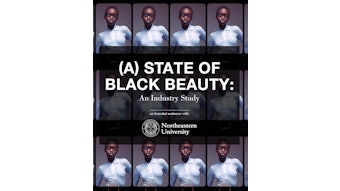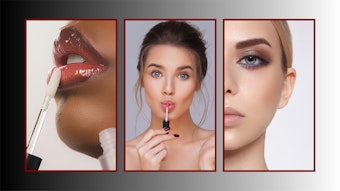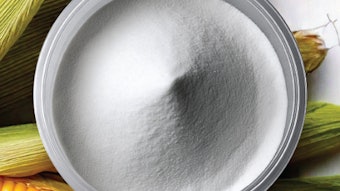This article originally ran in the August 2011 issue of Perfumer & Flavorist magazine. All rights reserved.
In 1969, when the burning Cuyahoga River made the cover of Time magazine, the modern environmental movement galvanized, leading to the founding of the US Environmental Protection Agency (EPA). The EPA is a science agency with regulatory authority, said Paul Anastas, assistant administrator for the Office of Research and Development, and science advisor to the EPA. As the organization’s mission progressed over time, issues became more subtle, encompassing not raging river fires, but more nuanced and less easily explicable issues such as endocrine disruption and climate change. Anastas has learned throughout the years that we are capable of doing the right things wrongly, such as in the case of achieving energy efficiency by using toxic substances in light bulbs, thus netting unintended consequences. And so, said Anastas, innovative thinking and design that focuses on the possibilities, rather than the limitations, of design is crucial. To illustrate, he discussed the effect of computational toxicology in lowering the toxicity of newly introduced ingredients. When applied to nano substances, for instance, this can net the application and not the implications of new technologies. Anastas added that innovative design must rely on multidisciplinary research that brings many voices to the table to define the maximum number of possible solutions. This point of view was backed by Julie Zimmerman, Yale University’s acting director of the Center for Green Chemistry and Green Engineering, who noted that 70% of the total cost of a new ingredient or process is determined at the design phase. Anastas concluded that “transparency is coming,” adding that industry must get ahead of the curve with green chemical engineering.
Picking up on the theme, Douglas Fratz, vice president, scientific and technical affairs for the Consumer Specialty Products Association (CSPA), discussed the rise of “right to know,” pointing out that many NGOs oppose confidential business information (CBI) protections, particularly for fragrance formulas. Michelle Radecki, vice president and general counsel of the American Cleaning Institute (ACI), outlined the recently revised Consumer Product Ingredient Communication Initiative developed by ACI, CSPA and the Canadian Consumer Specialty Products Association, covering cleaning products, air care products, automotive care products, and polishes and floor maintenance products.
Effective January 2012, the new rules note that, “Fragrances can be listed as such, but manufacturers must refer to the availability of more detail elsewhere, such as a link to the list or a subset of the list of fragrance materials authored by the International Fragrance Association (IFRA) or a list disclosing the ingredients that the manufacturer uses in its fragrances.” In contrast, Radecki highlighted what she saw as shortcomings of Design for the Environment’s (DfE) approach, particularly inadequate protection for CBI and the inclusion of the option of listing fragrances by the ingredients in the fragrance and fragrance ingredients not used. While ACI supports transparency, Radecki said, CBI must be defended, fragrance formulas must be afforded trade secret protections, companies must be protected from revealing information to competitors, and individual ingredient identities in formulas included under CBI. “Trade secret protection provides societal and environmental benefits by creating the incentive for product research and development leading to meaningful product innovation and improvement,” she said. “Successful innovation provides jobs, which support families and communities, as well as environmental benefits such as reduced packaging, reduced transportation costs and carbon footprint."
From the perfumer’s point of view, Guy Vincent of Aveda explained that, after trustworthy reputation, the first reason consumers buy Aveda products is the fragrance. To continue its reputation and provide fragrance excellence, Aveda has grown its organic essential oil purchases from 20% of its palette to 90% in the past 10 years. However, this has incurred huge operational costs. Sometimes, said Vincent, working conditions are not safe for locals. Ethical sourcing requires improvements in processes for safety and ecology. But, he said, “It doesn’t take much money to make a difference.” In addition, in order to cause no harm, Vincent noted that sometimes formulators have to do without beautiful, but endangered materials, such as Indian sandalwood, to ensure business sustainability.
Such strains on natural resources are only growing, noted Jack Corley, executive vice president of Trilogy Fragrances. The 2009 natural and organic product market reached $8.1 billion, he said, further breaking down results by category: aroma/fragrances, 4.2% (+13% growth), $376 million; deodorants, 2.7% (+6.7%), $240 million; baby care products, 2.24% (+14.3%), $200 million; bath items, 2% (+9.4%), $175 million; feminine hygiene, 1.35% (+9.1%), $120 million; shaving, 1.74% (+6.9%), $155 million; nail care, 0.04% (+16.7%), $35 million; skin care, 39% (+8%), $3,409 million; hair care 21.4.% (+9.4%), $1,920 million; bath and toilet soaps, 12.3% (+6.8%), $1,100 million; oral hygiene, 7.6% (+20%), $679 million, and color cosmetics, 5.1% (+20%), $456 million.
In his presentation, Tim Whitely, global R&D director of CPL Aromas, noted that more than 3,000 organic-positioned beauty and household products were launched globally in 2009 at an estimated ratio of 12:1. "These products are becoming more widely available, moving from specialist retailers to drugstores and supermarkets,” Whitely added, as 40% of US and EU women seek natural-claiming skin care products.
Corley’s presentation explained that these product categories require ever-increasing amounts of ingredients—essential oils, absolutes, fractions and isolates, botanical extracts, tinctures, resinoids, and vegetable oils. He added that the top 110 essential oils and absolutes represent—in terms of volume and value—about 95% of the global consumption in the flavor and fragrance industry. It comes as no surprise then that the essential oil and absolute market is growing at 8% per year. And the industry is already meeting its limit, threatening future supplies of Indian sandalwood, bois de rose oil and Haitian lime. The challenge, then, is for perfumers to create affordable and sustainable formulations incorporating naturals, even as they work to overcome technical difficulties such as stability, color differences and substantivity.
Because the palette for natural and organic fragrances is so limited (natural: ca 350 raw materials; organic: ca 150 raw materials), Whitely said, such fragrances cannot be as complex as conventional counterparts, nor can they achieve certain affects, such as woody or musk notes. He concluded, “Depending on the actual material and amount available, costs can be between 2x and 10x more expensive than the standard natural material.”
Pierre-Jean Hellivan, Vigon’s director of natural ingredients, echoed Corley’s comments, pointing out that naturals are sourced from all over the world—clove from Madagascar, mints from the United States, jasmine from India. The complexities of sourcing hundreds of naturals—much less doing so sustainably—has led to varying levels of sourcing sophistication throughout the industry. In a multilayer supply chain, Hellivan said, the fragrance house is often far removed from farming operations' purchasers, and faces supply-demand fluctuations subject to speculation by suppliers. Corporate citizenship is in its infancy, he declared, noting that rising pressure from retailers and consumer goods companies will inevitably push fragrance houses into sustainable sourcing programs, concluding, “Let’s assume leadership!”
Clorox research fellow Gregory van Buskirk and corporate responsibility corporate communications officer Aileen Zerrudo explained that 40% of the company’s growth is now coming from sustainable brands. In addition, Clorox will make sustainability improvements in 25% of products by 2013. Noting that the launch of its GreenWorks product line in 2008 was a turning point for the company, Zerrudo announced that the company has just introduced a mobile product ingredient app and website “that will give consumers immediate access to product ingredient information while they shop or whenever they need it.”
Michael Bronner, vice president of Dr. Bronner’s, presented the point of view of a sustainability and natural/organic veteran. Outlining the company’s unique history, he declared, “In a truly ecological company, everything connects.” The company has embraced 100% precycled bottles and strict IMO Fair for Life certification. The company, which sources about 500 ha of peppermint grown in India, sustains farmers’ profitability by estimating the cost of production (labor, land and inputs) and adding 10% profit, plus an additional 10% organic premium. All cost of inspection and certification, he noted, is paid for by the private sector.
Information does not equal meaning, said Steve Herman, president of Diffusion LLC, pointing out that challenges of sustainability and transparency continue past the product manufacturing stage. Today, he said, the public is resistant to facts, in part due to chemophobia, a lack of scientific and toxicology understanding, a deluge of information of highly variable quality, and an uncivil discourse environment. Yet even as consumers, NGOs and regulators demand greater ingredient transparency, common definitions are elusive. “If the EPA and the World Health Organization can’t agree on a safe threshold for dioxin, is it unreasonable that consumers are confused by allegations of dioxin contamination in cosmetics and fragrances?” Herman asked. His solution included the following: Web-based ingredient disclosure; easiest possible nomenclature, linked to industry created tutorial on toxicology basics; all criticism of safety issues addressed rapidly, head-on and in simple language.
Finally, representing those pressuring the fragrance industry for greater disclosure, US EPA DfE environmental scientist Libby Sommer described the program’s goals as: identifying safer aroma chemicals and fragrance formulations, full transparency of human health and environmental hazards of fragrance ingredients, and achieving such activities at the most efficient cost. “In general,” said Sommer, “[consumers and NGOs] are seeking greater oversight of the chemicals in products, including fragrances.” Echoing this point, Erin Switalski, executive director for Women’s Voices for the Earth, stated, “Today’s consumers want more information.”










